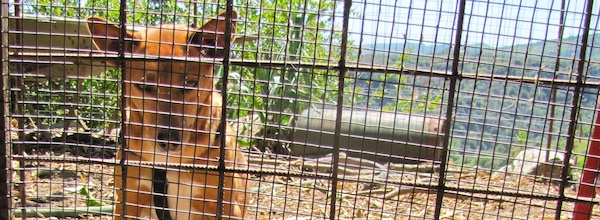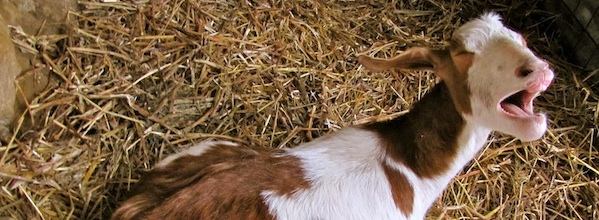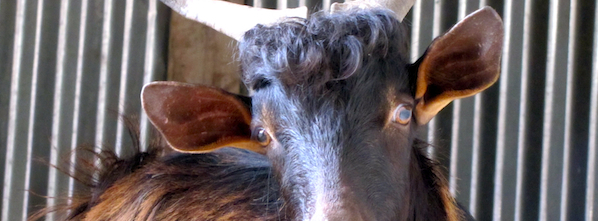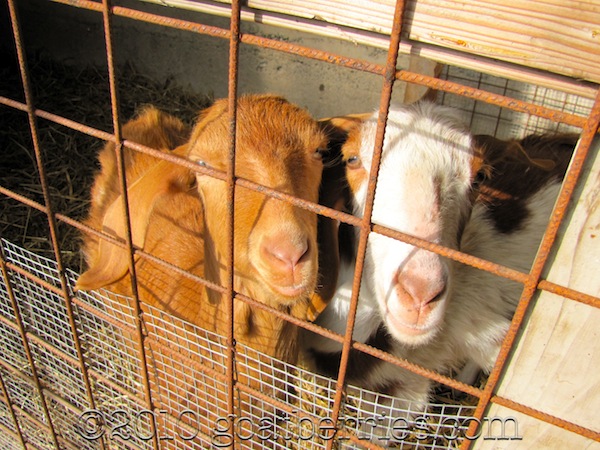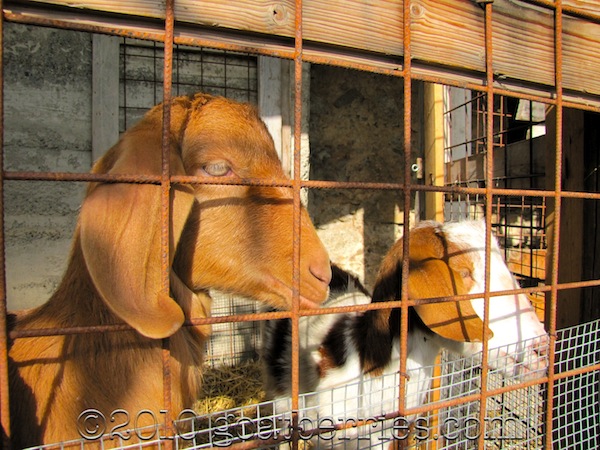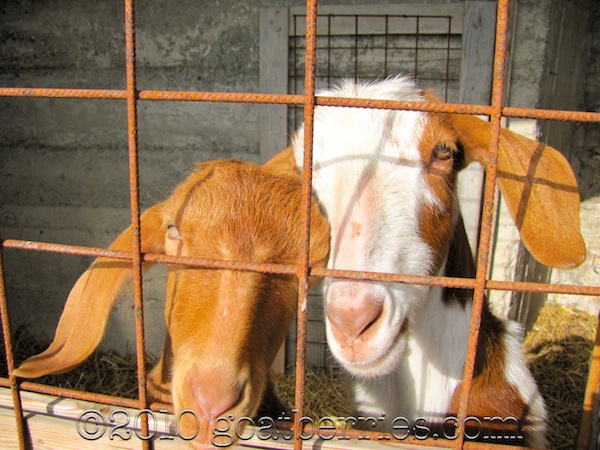Archive for the ‘Kidding’ Category
Pasqualina & Her Doelings
Pasqualina gave birth on April 23, 2012 to two healthy doelings — here are the deets!
Read on...As Goat Birth Creeps Closer…
Pasqualina’s belly is growing, her udder is filling out, and she’s lying around more than usual. We’re getting close!
Read on...There’s a New Buck in Town
If all goes well, kids in the spring! Meet the buck who can make it all possible.
Read on...Horns or No Horns on Goats — Which is Better?
Faithful reader Renee posed a question on the Goat Berries Facebook page recently: What do we goat people feel about horns? I thought this was a great question for discussion, so I’m posting it here — please do add your thoughts on the issue as it can help other goat people make some tough decisions.
First, for anyone who doesn’t know, horns don’t go by sex; that is, you both females and males may have horns. It is a genetic trait (kind of like those adorable wattles), so if you’re breeding goats with horns, you’re probably, although not definitely, going to end up with kids with horns.
My girls are both naturally polled (born without horns), so the horn issue isn’t something we dealt with directly *but* we did aim for hornless, so I suppose you can say that I’m on the “no horn” side –beautiful as they can be. Just look at this dude:
From what I’ve read, anecdotes about how dangerous horns can be were the most persuasive to me. Goat horns can be dangerous not only for the goat caretakers and their families but also for fellow goats and other animals; goats do tend to headbutt in play and sometimes aggression and can do serious damage to others in either case.
Then there’s the possibility of the horns getting stuck in fences, etc., and putting the goat in other compromising positions, which can not only cause stress and difficulty in freeing itself (the goat can do major damage and even kill itself trying to get free), but it can also leave him or her exposed to predators — even a dog can kill a goat if it really wants to.
On the flip side, some people argue that disbudding is inhumane and unnatural as horns are goats’ natural defenses and help them cool off as sweat glands.
There’s a good discussion of this issue from a long-time goat caretaker at Fias Co. Farm, so I highly recommend heading over there for more information on this as well as on proper disbudding procedures. For the uninitiated, “disbudding” is the process of removing goat’s horns and really isn’t for the faint of heart — and quite painful for the kids too. Note that you should disbud within the first week of the kid’s life, so if you’re about to have kids, this is something you should think about sooner rather than later so you’re prepared.
For our goat-raising situation, I’d say disbudding would be best for us if faced with the horn dilemma — but this is a personal decision, of course, and I’d love to hear your take on it.
So, goat peeps, what is your position on horns? Do you goats have horns? If your goats get disbudded, do you do it yourself? Also, are your goats mixed — some polled, some horned? How does that work out?
A Fall Without Goat Breeding
Faithful followers of Pasqualina may remember that by this time last year, she was already pregnant with (who we now know as) Pinta.
This year Pasqualina is decidedly without kid — by our choice. And it really has more to do with Pinta than Pasqualina.
I like to call the general rule for mating a female goat as “8 and 80.” That is, when she reaches eight months old and 80 pounds, she can be safely bred.
Pinta turned eight months old toward the end of November, which technically is still heat season, but I really don’t think she was up to 80 pounds. We didn’t weigh her, so I could be wrong, but she just *seems* quite a bit smaller than Pasqualina was when we bred her (Pasqualina was around nine months old). In any event, we just feel more comfortable waiting to breed her, so that’s what we’re going to do.
We could have just bred Pasqualina, but that would have meant putting a (borrowed) buck in with Pasqualina and locking Pinta in another pen by herself to avoid any “accidents” with the buck. Yes, the pens are only separated by a see-through gate, but we figured not only would that be sad for Pinta, it would also be a little easier on us to have them both bred at the same time rather than staggered.
So the next breeding season will come early next summer, and the kids should arrive in November if, as we hope, all goes well. I’m already a little nervous about the weather being chilly for their delivery, although truth be told, daytime temps around here in November are usually still in the 70s — but there’s nothing like being a worrywart goat maaaa, right?
Anyway, for now, we just have our two girls, and they seem OK with that, don’t you think?

